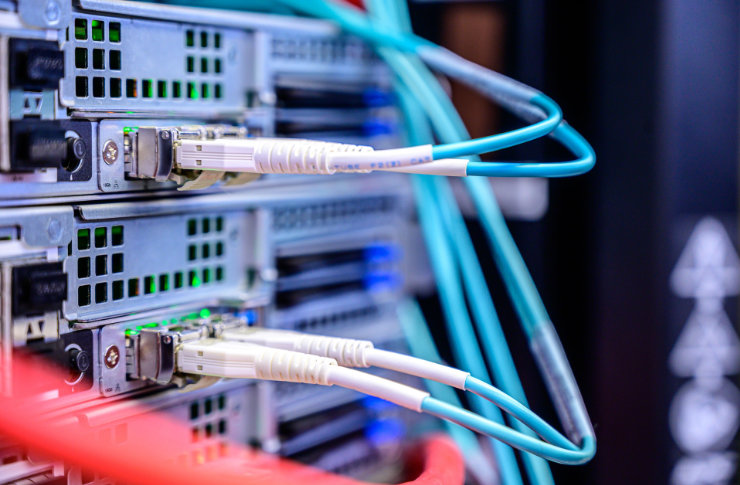Telecom Resiliency: Building Networks That Withstand Disasters
Natural disasters and unexpected events can wreak havoc on telecommunications infrastructure, leaving communities cut off when they need connectivity most. As climate change increases the frequency and severity of extreme weather, telecom resilience has become a critical focus for the industry. This article explores innovative approaches to creating disaster-proof networks that keep people connected when it matters most.

The consequences of these outages extend far beyond mere inconvenience. During emergencies, reliable communication is essential for coordinating rescue efforts, disseminating vital information, and allowing people to contact loved ones. Extended outages can hamper disaster response, impede economic recovery, and leave vulnerable populations isolated. As our reliance on connectivity grows, so too does the imperative to create resilient networks that can withstand extreme conditions.
Hardening Physical Infrastructure
One key aspect of improving network resiliency involves physically reinforcing telecommunications equipment and facilities to better withstand disasters. This includes measures like:
-
Elevating equipment in flood-prone areas
-
Reinforcing towers and structures to resist high winds
-
Installing backup power systems with extended runtime
-
Burying vulnerable cables underground where feasible
-
Using corrosion-resistant materials in coastal regions
While these upgrades require significant investment, they can dramatically improve a network’s ability to weather storms and continue operating. Some telecoms are also exploring modular, rapidly deployable equipment that can be quickly installed to restore service after a disaster.
Diversifying Network Topologies
Traditional hub-and-spoke network designs create single points of failure that can take down large sections of a network if damaged. To combat this, telecoms are increasingly implementing more distributed, mesh-like topologies with multiple redundant paths. This allows traffic to be dynamically rerouted around damaged sections.
Software-defined networking (SDN) and network function virtualization (NFV) technologies are enabling more flexible, resilient network architectures. These allow network resources to be quickly reconfigured and reallocated in response to changing conditions or outages. Some providers are also exploring ways to make individual network nodes more self-sufficient, able to continue providing at least basic connectivity even if cut off from the wider network.
Leveraging Non-Terrestrial Networks
Satellite and high-altitude platform station (HAPS) technologies offer promising ways to provide connectivity that’s less vulnerable to ground-based disasters. These solutions can rapidly restore communications in affected areas or serve as backup links when terrestrial infrastructure fails.
Low Earth orbit (LEO) satellite constellations, in particular, are poised to play a growing role in disaster resilience. Their lower latency and higher throughput compared to traditional geostationary satellites make them suitable for a wider range of applications. Some telecoms are already partnering with satellite providers to integrate these capabilities into their resilience strategies.
Artificial Intelligence for Predictive Maintenance
AI and machine learning technologies are increasingly being applied to network management and maintenance. These tools can analyze vast amounts of sensor and performance data to predict potential failures before they occur. This allows for proactive maintenance and hardening of vulnerable network elements.
During and after disasters, AI can also assist in rapidly assessing damage, optimizing repair efforts, and dynamically reconfiguring networks to maintain maximum connectivity. Some providers are even exploring the use of AI-powered drones and robots to conduct inspections and repairs in hazardous post-disaster environments.
Community-Based Resilience Initiatives
While large-scale infrastructure improvements are crucial, there’s also growing recognition of the importance of local, community-based approaches to telecom resilience. This includes initiatives like:
-
Community mesh networks that can operate independently of larger infrastructure
-
Local caching and content delivery systems to reduce reliance on long-distance links
-
Training programs to build local technical capacity for network maintenance and repair
-
Partnerships with community organizations to identify critical connectivity needs
These grassroots efforts can complement top-down approaches, creating multiple layers of resilience and ensuring communities have some level of connectivity even in worst-case scenarios.
Regulatory and Policy Considerations
Enhancing telecom resilience isn’t just a technical challenge—it also requires supportive regulatory frameworks and policies. Governments and industry bodies are increasingly focusing on this issue, with initiatives including:
-
Updated building codes and standards for telecom infrastructure in disaster-prone areas
-
Mandates for minimum backup power capabilities
-
Spectrum allocations for emergency communications
-
Funding programs to support resilience upgrades, especially in vulnerable regions
-
Improved coordination between telecom providers, emergency services, and disaster response agencies
As the importance of connectivity in crisis situations becomes ever more apparent, we can expect to see continued policy development in this area.
The Path Forward
Building truly resilient telecommunications networks is a complex, ongoing challenge that requires collaboration between industry, government, and communities. While significant progress has been made, there’s still much work to be done to ensure our vital communication links can withstand whatever nature—or human activity—throws at them.
As we look to the future, emerging technologies like AI, advanced materials, and new network architectures offer promising avenues for further improving resilience. However, it’s clear that a holistic approach—combining robust infrastructure, flexible systems, and empowered communities—will be key to keeping the world connected when it matters most.





